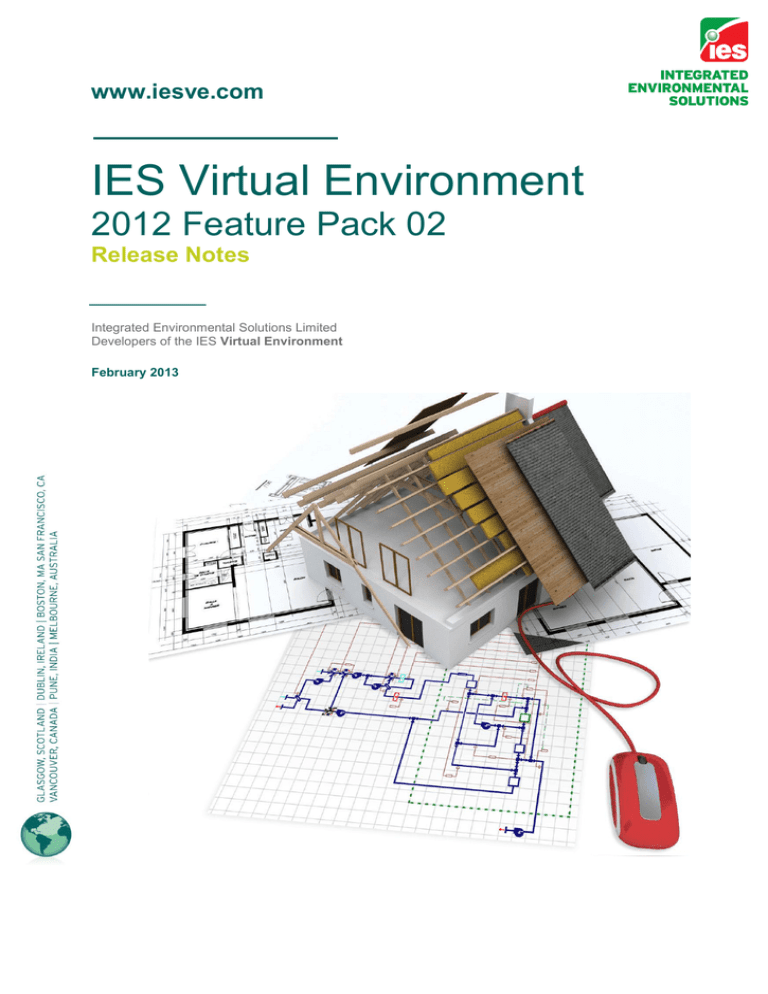
IES VE AND REVIT MASSING SOFTWARE
It has been suggested that with the advanced inter-operability of today’s BIM and energy modelling software tools, there is essentially one model required for design, engineering and energy modelling and this model can be passed around between team members, each of whom can perform the tasks required to do their job.

And beyond these direct links, many BIM and energy modelling programs can use the gbXML schema to import/export model data between programs.

Programs like Google Sketchup and AutoDesk Revit have plug-ins with direct links to IES. Not only does this streamlined process have the potential to save time, it also eliminates the opportunity for mistakes in the translation from the BIM model to the energy model. The BIM model created by the architect can be exported to the energy modelling software, thereby eliminating the time-consuming area takeoffs and geometric modelling aspects of the energy modelling process. With so many options, it takes knowledge and experience to determine which is the most appropriate for a given project.Ī lot has been made of the benefit of combining BIM and energy models. Some are better at modelling hydronic systems some are better at modelling air-side systems some are more visual some have better reporting features some have codes and standards built in and can automatically generate certain reference models. There are many different energy modelling software options, all of which have strengths and weaknesses. When this is done, the energy model becomes a valuable tool the owner can use to perform “what-if” analysis on proposed changes over the life of the building. Many building owners are opting to design sub-metering systems with the intent of using the data to calibrate the design energy model after a year of operation. It has become a completely mainstream part of the design process.Īnd like BIM models, energy models are starting to bridge the gap between design tool and owner/operator tool.

No longer is energy modelling only done on so-called high performance buildings. With the popularity of the LEED rating system and the stringent energy efficiency requirements of some building codes, developers, owners and designers are paying close attention to the energy performance of their new buildings. BIM models created by architects and engineers during design are being used by contractors during construction and then passed along to the owner and operator for use during the life of the building.Īnother major change in the industry recently is the focus on energy modelling. Many architects, engineers, contractors, owners and operators are starting to look beyond 3D BIM toward 4D (time), 5D (cost) and even 6D (life-cycle management). For example the model will know if the user is trying to draw a length of ductwork through a structural column, unlike a 2D CAD drawing which will not make this distinction.Īs technology changes, so does the idea of BIM. All this work must be done within a breakneck schedule, at the lowest possible life-cycle cost, with the lowest possible environmental footprint.Ī big reason why 3D BIM has been so widely adopted is that it has the potential to reduce coordination time between disciplines. From HVAC, plumbing and fire protection to power, lighting and controls, it is the role of the MEP engineer to make these systems work within the overall context of structure, architecture and site.įurthermore, the expectations for new construction in this day and age are very high. Engineers, designers and energy modellers work together behind the scenes to provide all the sophisticated systems that we expect to find in the built environment. Within an MEP engineering office many specialized professionals are involved in putting forward an efficient, coordinated and cost-effective design. High performance buildings are complex systems. And the many tools that do exist often have trouble getting along. There is no single tool that can do everything well. Three different models developed by three different departments for three different tasks on a single building.Īlthough the software tools have improved dramatically, there is still a disconnect between expectations and reality. Three different tools for three different tasks: HAP or TRACE for load calculations, Revit or AutoCAD for design/production, eQUEST or IES for energy modelling. Even still, this triplication of work is common practice in many mechanical-electrical-plumbing (MEP) engineering offices. Why do a job once when you can do it three times? If you are only being paid to do the job once then the answer should be obvious.


 0 kommentar(er)
0 kommentar(er)
